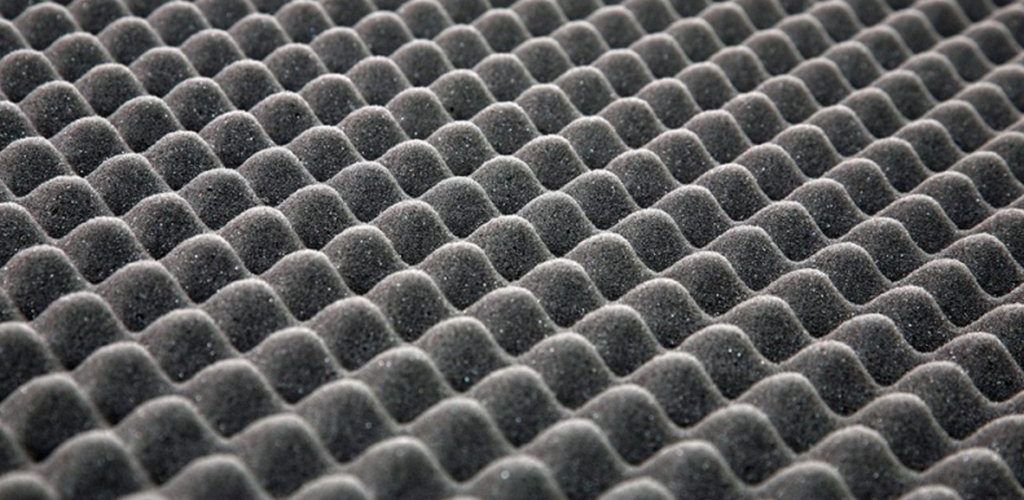From musician studios to automobiles, several techniques are employed when soundproofing areas to limit the amount of noise that may escape into areas where it is not desirable. While this chore can be very difficult, it is important to research readily available cost-saving technologies. From building materials, wall fixtures, and microphones, dampening sound has never been this easy for the casual and business consumer.
By-and-large the most effective means of soundproofing is with the material used in building the structure. Due to the porous and thin quality of woven textiles, blankets and tarps have a very limited ability to contain the transfer of sound. Thinking in terms of mass, if it does not weigh very much, then it won’t stop very much. For instance, you can very easily hear the slightly muffled steps from a bear sneaking up on you while camping.
During my time as a musician, I was able to rent space in a building constructed of brick that also had very small windows. To solve the echoing problem, large pieces of studio foam were place on the wall to limit the rebounding of the sound waves. Sound was contained well enough that neighbors were able to sleep quietly while the band practiced loudly into the wee hours of the morning.
As a material, sheetrock is an invaluable and inexpensive way to soundproof a wall. For serious jobs, coupling sheets of lead with the sheetrock will certainly stop the noise. However, it is impractical to place sheetrock over drywall. Doing so is often against the terms of lease agreements, and the silicon caulking or green glue used to mount the sheetrock will be impossible to remove.
If, however, you wish to contain noise from the ceiling, and you have access to an attic, then creating a floor with sheetrock is a simple and cost effective way of soundproofing. For building contractors interested in soundproofing between floors of an apartment or office building, use of sheetrock may prove impractical. However, properly installed “Z” shaped steel channels are quite resilient for areas too inaccessible for sheetrock. These channels focus the noise in a desirable direction.
For more practical applications, you may use special rolls of composite material to dampen the transfer of noise. In addition to the absorption ability of the decoupling foam, most composite soundproofing is also used to reflect heat and light. Car manufacturers often use this material to keep sound and heat from entering the passenger area of the vehicle from the engine.
Composite materials are easy to find but are not necessarily cheap. They are easily installed using a mild adhesive that typically is already on the reverse side of the material. With its flexibility and limited width, it is a low-profile configuration that soundproofs effectively.
In addition to composites, upscale car manufactures use microphone technology to soundproof vehicles. Ever wonder how you can walk near a luxurious automobile and hear nothing from its motor? Microphones are placed inside the muffler to absorb the sound which is then released in a noiseless way. Yet, placing microphones around your home or business is probably the most expensive and impractical way of soundproofing a room.
A common feature in auditoriums, movie theaters, and gymnasiums are soft acoustic panels. Whether on the walls or hanging from the ceiling, theses soundproofing panels can be used to absorb noise or reflect it toward a particular direction. While their use has been popularized in commercial and academic applications, their use inside homes and apartments is becoming more common and has gained practicality with interior design.
These panels have fabric coverings to a sound absorbing center. In this way, consumers can choose the color and design of the fabric to match or coincide with other colors and designs already in a room. While not suitable for loud industrial noises or the crashing sounds of a drummer, using soft acoustic panels will effectively keep television or vocal sounds within a designated area.
In the end, biting your nails every time the neighbor hits a high note will not work in the long-term. Instead, finding a source of expert soundproofing advice will help in developing the most cost effective solution for your needs.
Related Posts
- How To Soundproof A Garage?
- How To Soundproof A Window?
- How To Soundproof Windows?
- How To Soundproof A Bedroom?



